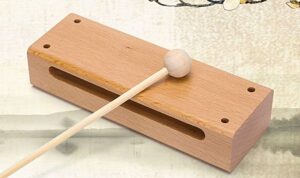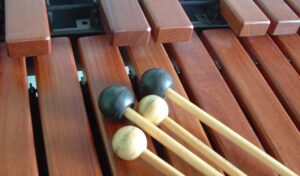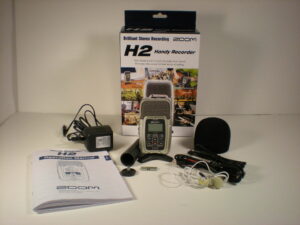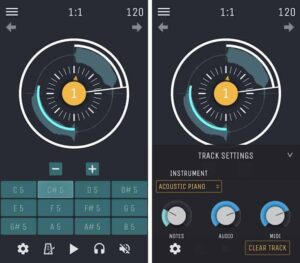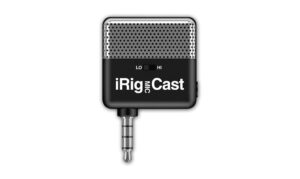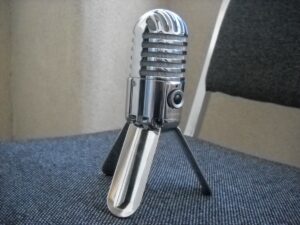A nice addition to any MIDI setup or to serve as a starting point for anybody with an interest in sound design, the Korg nanoKEY2 takes a considerable step forward from its previous iteration in terms of style. Whereas the first nanoKEY was modeled after the thin, trapezoidal sort of keys frequently found on laptop keyboards, the nanoKEY2 adds some spacing and autonomy for each button by taking a page from the MacBook, with rectangular keys that are each spaced uniformly and separated by the plastic casing. The nanoKEY2 lives up to its name by being incredibly thin and lightweight, only taking up as much space as it absolutely needs to. Just like some thin and lightweight music intruments, this keyboard does what it’s supposed to do.
With 25 keys, as well as on-board octave changing, pitch modulation, and note sustaining, the Korg nanoKEY2 is extremely flexible in what it can accomplish as long as you exercise a little bit of creativity and planning beforehand. The true amount of its capabilities are highlighted through the software licenses provided with each purchase. From Korg’s own M1 Le synthesizer program to ToonTrack’s EZDrummer Lite, Lounge Lizard Session, and a $50 coupon for any of the critically-acclaimed Ableton programs redeemable through their website, the Korg nanoKEY2 is a smart investment for anyone getting started just in terms of the software included.
Related: If you need a mic to create some music, check out our Samson Meteor Mic review.
As someone with a small amount of practice on larger, more classically designed keyboards and pianos, the uniform size and spacing of the white and black keys has a tendency to throw me off, leading to me placing my fingers between keys and pressing them simultaneously, or getting finger spacing all wrong while playing chords. Obviously, the nanoKEY2 isn’t designed with 1:1 piano replication in mind, but it does need to be considered for anybody who thinks they can just jump right onto this device without any acclimation.
That being said, the inclusion of velocity-sensitive keys on a keyboard of this size and price range was more than enough to make up for any issues I might have with key spacing. Though I have had a little bit of trouble comfortably replicating the right amount of pressure while playing around on a consistent basis, that can all be adjusted via the software with four different settings for the velocity and pressure. It may seem like a frivolous feature, but anybody who’s played a piano knows the massive difference between a soft, whispering melody and pounding the keys like Ben Folds. That the Korg nanoKEY2 lets you decide which you’d prefer by simply playing is a big, big deal.
See also: Our iRig Mic Cast review.
More of an additional tool to be used in conjunction with other devices, the nanoKEY2’s slim, portable design fits in well with other similar devices that hook up easily to laptops or tablets. Available in black or white, you can even select the design that better matches the rest of your gear. Due to the smaller design and lack of included features and full playability, the Korg nanoKEY2 isn’t going to be good enough as a stand-alone keyboard for any serious players, but then that’s not really it’s intended purpose. The nanoKEY2 is really ideal for sitting alongside other equipment, adding extra functionality to already existing digital musical tools, and it does that pretty well.
Editor’s Rating
[rating:4/5]
Great
Bottom Line: The Korg nanoKEY2 is a pretty bare-bones synthesizer that let’s you get right down to handling some simple play that can be fleshed out more in the presence of a full suite of software and hardware. Designed more as an additional keyboard to use with others, the amount of full-featured musical programs whose licenses come with the nanoKEY2 make it an ideal starter set for anybody looking to start dabbling in music. For the price, there’s just so much you can do with this keyboard while getting your feet wet to pass it up.
Pros:
- Onboard pitch, octave, and sustain buttons give the user a good deal more ability than a regular 25-key mini-keyboard
- Velocity-sensitive keys allow for a more natural feel while playing
- Included suite of software is enough to get absolutely anybody started with powerful, flexible tools
Cons:
- Key spacing can seem a little unfamiliar to anybody with any training on a more traditionally shaped piano or keyboard
- Hard to play anything of any considerable depth or range without the assistance of a looping device or software
- Sustain can only be held, not toggled, so sustaining a note in one octave and then playing a part in a different one only sustains every note played
The Korg nanoKEY2 is available from Amazon for $49.99.
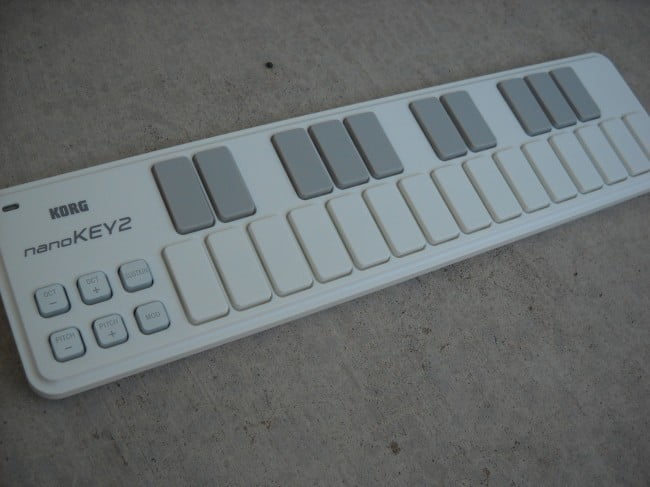
![3 Best Upright Basses in [year] 1 Best Upright Bass](https://www.gadgetreview.dev/wp-content/uploads/best-ipright-bass-300x169.jpg)
![7 Best Piano Keyboard Stickers in [year] 2 Best Piano Keyboard Stickers](https://www.gadgetreview.dev/wp-content/uploads/best-piano-keyboard-stickers-300x300.jpg)
![7 Best Record Storage Holders in [year] 3 7 Best Record Storage Holders in [year]](https://www.gadgetreview.dev/wp-content/uploads/best-record-storage-holder-300x230.jpg)
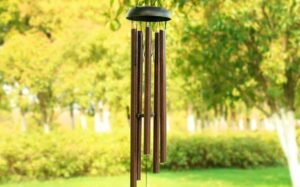
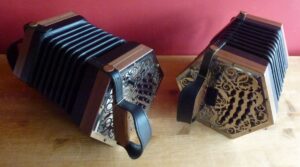
![Best Cowbell in [year] ([month] Reviews) 6 Best Cowbells](https://www.gadgetreview.dev/wp-content/uploads/best-cowbells-300x150.jpg)
![Best Djembe in [year] ([month] Reviews) 7 Best Djembes](https://www.gadgetreview.dev/wp-content/uploads/best-djembes-300x200.jpg)
![Best Dulcimer in [year] ([month] Reviews) 8 Best Dulcimer](https://www.gadgetreview.dev/wp-content/uploads/best-dulcimer-300x155.jpg)



